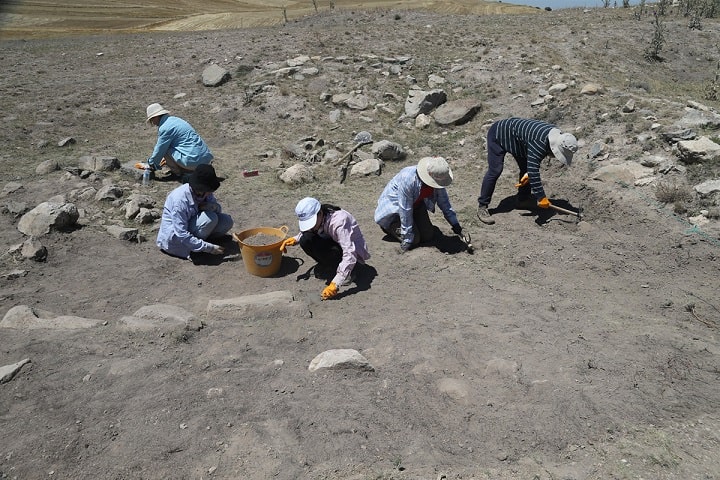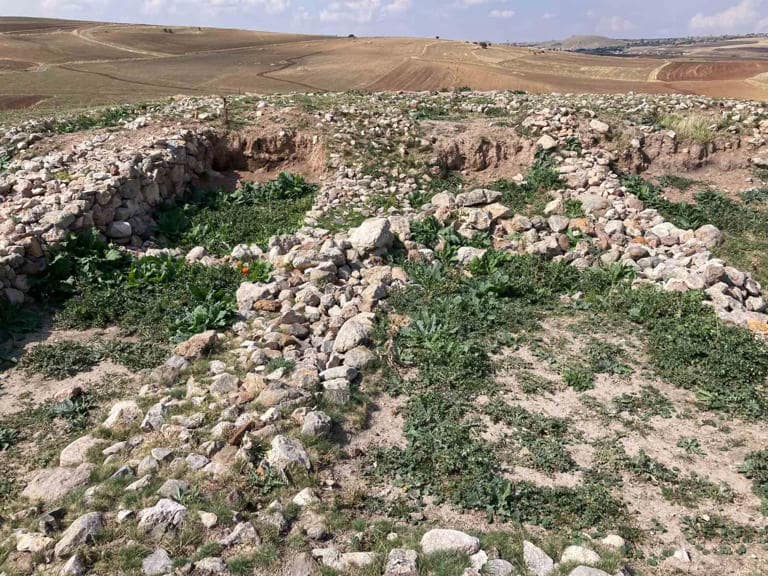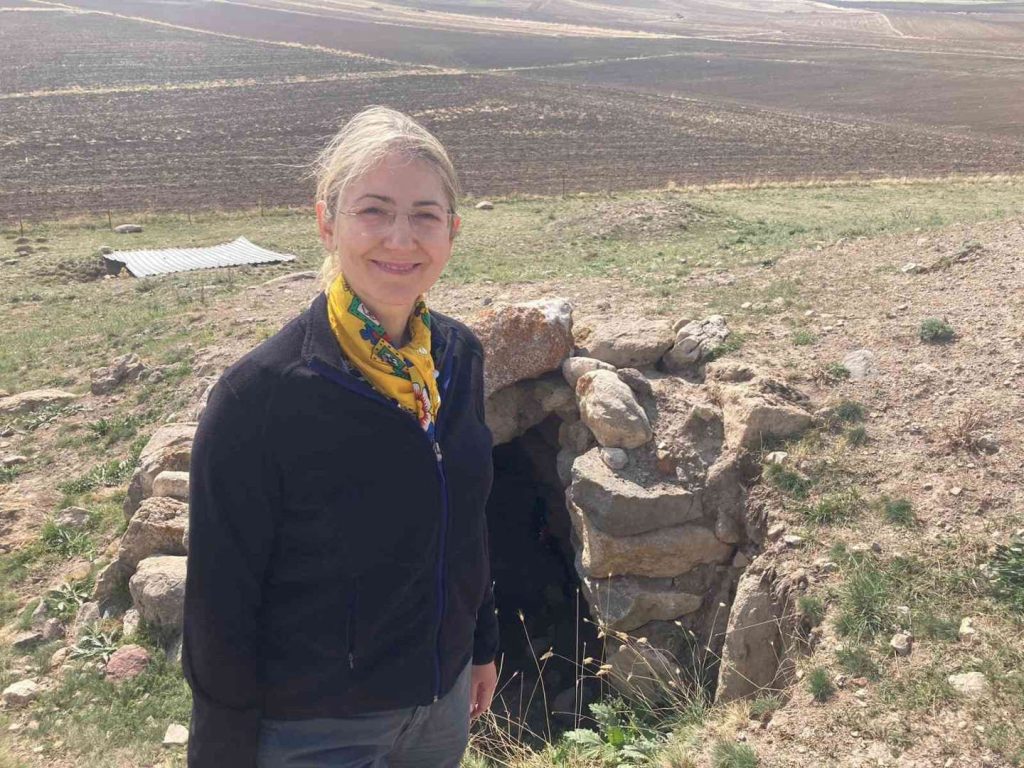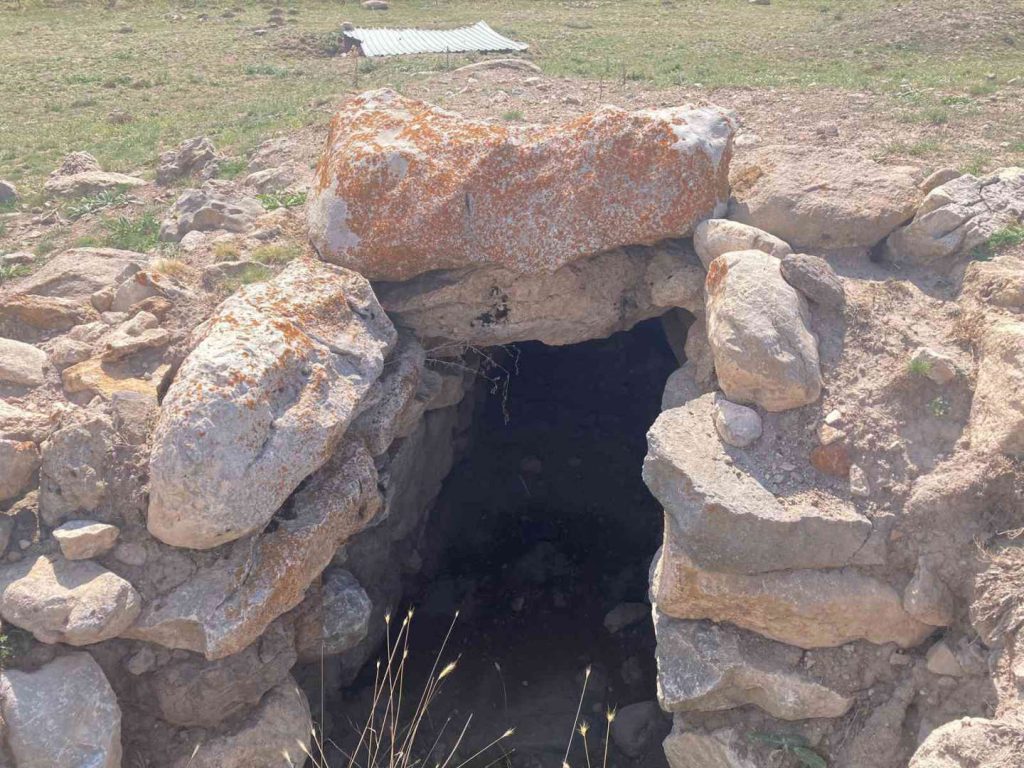
The aim is to unearth important findings from the Hittite period in Külhöyük
The Külhöyük, located in the Gölbaşı district of Ankara, the capital of Türkiye, continues to provide data shedding light on Hittite history.
The location of Külhöyük on the road network through which the Hittites reached the Cilicia region has made it a significant center both militarily and commercially throughout the ages.
Külhöyük was discovered as a result of unauthorized excavations in 1978. After the area was expropriated in 1992, rescue excavations were conducted by the Ankara Museum of Anatolian Civilizations for 14 years, from 1992 to 2006.

The mound, believed to have been used by the Hatti city-states and considered a sacred area among the Hittites, revealed important findings from the Hittite period during these excavations. Among the discoveries were a monumental structure, Cyclopean wall structures, and two gateway structures connected to a defensive system. Additionally, significant artifacts such as bullae with Hittite hieroglyphic inscriptions were unearthed during the excavations.
The settlement on the mound, located approximately 8 kilometers from the Hittite fortress Gavurkale, is currently the only Hittite city under excavation in Ankara.
The excavations at Külhöyük are conducted by a team led by Assoc. Prof. Dr. Derya Yılmaz, a faculty member of the Department of Archaeology at the Faculty of Languages, History, and Geography at Ankara University.

In an exclusive statement to the Ihlas News Agency (IHA), excavation director Assoc. Prof. Dr. Derya Yılmaz stated that monumental Hittite structures have been discovered at Külhöyük. He mentioned, “The stone foundations of this structure are visible behind us. Along with this structure, there are stone tunnels known as poterns, dated to the Hittite period. These are structures used during the Hittite era. Additionally, we know that the structure is a multi-roomed one and that cubes were used in the rooms. As the entire structure has not been fully revealed in the excavation strategy, we have developed a strategy to uncover the entire structure and determine its exact function. Due to the large dimensions of the mound area, we will also wait for the results of geophysical studies before excavating to determine new excavation areas, and we plan to open new excavation areas based on these results.”

“We believe it is one of the stone tunnels known as the sacred path.”
Yılmaz drew attention to the discovery of two stone tunnels at Külhöyük, emphasizing that the tunnels are 25 meters in length. He stated, “At the bottom of the tunnel, it reaches a room with four walls. Geological studies at Külhöyük were initially conducted by Prof. Dr. Ahmet Ercan from Istanbul Technical University, and according to his results, the area behind us was determined to be a pond during the Hittite period. This stone tunnel is also mentioned in Hittite texts. We believe it is one of the stone tunnels known as the sacred path descending to the water. Certainly, transportation was facilitated by passing through here during the Hittite era. Through the gateway structure standing here, we know that there are stone tunnels known as the sacred path.”
You may also like
- A 1700-year-old statue of Pan unearthed during the excavations at Polyeuktos in İstanbul
- The granary was found in the ancient city of Sebaste, founded by the first Roman emperor Augustus
- Donalar Kale Kapı Rock Tomb or Donalar Rock Tomb
- Theater emerges as works continue in ancient city of Perinthos
- Urartian King Argishti’s bronze shield revealed the name of an unknown country
- The religious center of Lycia, the ancient city of Letoon
- Who were the Luwians?
- A new study brings a fresh perspective on the Anatolian origin of the Indo-European languages
- Perhaps the oldest thermal treatment center in the world, which has been in continuous use for 2000 years -Basilica Therma Roman Bath or King’s Daughter-
- The largest synagogue of the ancient world, located in the ancient city of Sardis, is being restored











Leave a Reply